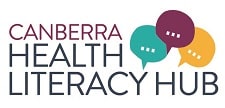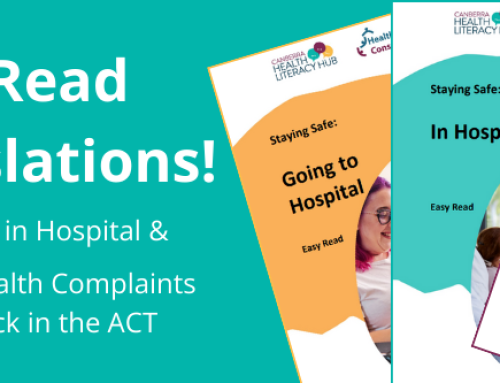An urgent call for governments to improve pandemic communications, and address health literacy concerns
Never has the health literacy of our population and our institutions been so important.
The current COVID-19 crisis brings into sharp relief the consequences of low health literacy in our communities and of our institutions.
Health literacy is the capacity to acquire, understand and use information in ways which promote and maintain good health, according to publications by the Institute of Medicine and United States Department of Health and Human Services. Digital health literacy is an increasingly important sub-component of these skills that relates to use of electronic media.
Population studies in Australia and worldwide (the United States, United Kingdom, Canada and Europe) show that people with lower functional health literacy have less knowledge about their health conditions and treatments, poorer overall health, higher rates of hospitalisation, and are less likely to follow care recommendations and to practise health-promoting behaviour, and engage with preventative health services.
In Australia, at the time of the last direct assessment, 59 percent of the population had inadequate (described as “very poor” or “marginal”) health literacy and 53 percent had inadequate numeracy (the ability to understand and interpret numeric information).
This means a staggering number – more than nine million adults – would struggle to interpret everyday health information such as reading instructions on a medicine bottle or interpreting a simple graph.
Low health literacy and low numeracy are more common in older adults, among those from a non-English speaking background and those with less formal education, and can be further reduced under high stress.
Poorly served
At a time when we need to effectively transmit crucial health information about hygiene, viral transmission, social distancing and more complex numerical information about ‘flattening the curve’, herd immunity and capacity in our hospitals, we as a population are poorly equipped and importantly we are being poorly served.
Despite the best intentions, public communication has been unclear, ad hoc, inconsistent, and often poorly timed.
This means people are interpreting messages differently and mis-information is spreading in the community, blurring and confusing public health messages. For example, the guidance on social distancing, is still leaving many people confused.
Can a friend (who is social distancing from all others) visit another friend (who is also social distancing from all others) in their household? The answer is no, yet simultaneously schools have been open and encouraged by the Federal Government to remain so, despite social distancing between schoolchildren being virtually impossible.
Taken together, the combination of extreme social restrictions in some circumstances but not in others has undermined public trust and confidence, and willingness to comply.
It is often forgotten that health literacy is in large part the consequence of the demand placed on the individual by the environment.
Health literacy responsiveness is a concept that applies to organisations and institutions that provide services, programs and information to the population and of course applies to our government, health services and non-government sector that supports health and wellbeing.
A responsive health literate organisation provides “information and services in ways that promote equitable access and engagement, that meet the diverse health literacy needs and preferences of individuals, families and communities, and that support people to participate in decisions regarding their health and social wellbeing”.
This means reducing the demands placed on individuals to understand and access complex information and reducing barriers to information and services.
Questioning institutions and organisations
At this time of widespread need we must ask ourselves if our health institutions and organisations are practising health literacy responsiveness.
If they are not, we must demand that they do so now and in the future.
The Federal Department of Health website is a good example where the basic first principles for a responsive health literate approach have not been followed. The literacy demands of this website are high with frequent use of unfamiliar and complex language.
A quick (albeit crude) analysis of its reading level (that is, the level of schooling required to understand text) showed it scored around grade 12 (Flesch-Kincaid), requiring an average of 14 years of formal schooling to understand.
International guidelines for good communication (such as those from the Centers for Diseases Control and Prevention in the US, and the World Health Organization) recommend achieving a grade 8 reading score or less for the general population and grade 5 for lower literacy populations for written health information.
The mismatch is stark and several weeks into the crisis, few COVID-19 resources have been designed for lower literacy populations or populations with poor English language skills.
Failure to consider the needs of groups with lower health literacy will render health information impractical for a large proportion of our population.
Given this, and the inconsistency and lack of clarity over key messages, is it really fair to penalise members of our community for failing to abide by the new public health laws?
It seems that some individuals will pay a heavy price for failures in government communication and this will disproportionately affect those least able to pay.
Ways forward
We can the build health literacy of our institutions and our populations.
In the Shanghai Declaration, the World Health Organization recently acknowledged health literacy is a critical determinant of health and a key driver of citizen empowerment and health equity. This has led to a mandate for developing, implementing and monitoring strategies for strengthening health literacy in all populations.
In Australia, the Australian Commission on Safety and Quality in Health Care’s National Safety and Quality Health Service Standards now include health literacy.
These state that health organisations should: ensure ‘consumers receive the information they need in a way that is appropriate for them’ (Standard 2.8); involve consumers in the development and review of health information (Standard 2.9) and support clinicians to communicate so that patients, carers and families receive the information they need to get the best health outcomes, and provide information that is easy to understand and act on (Standard 2.10).
There are tried and tested strategies to achieve these Standards with evidence-based principles for good communication, actionable messaging and health advice.
However, we have seen far too few examples of good communication in the current COVID-19 crisis.
Some positives
The BBC coronavirus website is an exception with a simple lay out, lots of white space, plain language and the plentiful use of images and animations to convey key information.
The World Health Organization website provides a myth busting section and provides simple videos on key messages with a clear explanation why advice is important. Croakey has previously reported on how Aboriginal and Torres Strait Islander health organisations have been sharing messages in ways that emphasise cultural strengths, solidarity and resilience.
We must put in place mechanisms and structures to meet the Standards across all levels of Government rapidly and responsively even in times of global pandemics. This can include basic protocols to ensure simple strategies are followed, such as using everyday words for all public health communication, testing readability level of written documents, checking the actionability of instructions (how clear instructions are to follow), using animations/ icons and in clinical practice using teach back.
We also need to ensure that materials are translated into community languages and are culturally appropriate.
We could establish Commonwealth and State based consumer panels to rapidly review messages before they are released. These could be convened via established, credible and member-based consumer organisations such as Consumers Health Forum of Australia and their national and state based members, and provide rapid online review.
Our work and others’ has shown that consumer feedback offers invaluable incremental improvements to the quality of patient information materials over and above the use of standardised tools, reinforcing the added benefit of consumer input in developing health information during a global pandemic such as we are facing now.
Social media upskilling
We need to get faster and more adept at the use of social media, responsive to the digital health literacy needs of the population.
While the Federal Government has now produced an App and WhatsApp group for COVID-19, these were needed much earlier. The information in these platforms is still not translated, and the content is mostly static (the mental health section being a notable exception). As a result, many people have turned to more engaging media from less reliable sources such as Facebook and Instagram.
As a nation we must also invest in building health literacy skills in the community including digital health literacy and critical skills to discriminate good health information from bad. This means introducing health literacy into curricula in schools, in higher education and healthcare settings with an emphasis on lifelong learning.
Opportunistic skills development can be integrated within healthcare delivery (for example, in diabetes education and parenting programs). Attention should focus on communities where there is greatest need, including Aboriginal and Torres Strait Islander communities.
Research has shown health literacy can be improved across the community – even in low resource setting such as Uganda. Such programs demonstrate success in building adults’ and school children’s functional skills to interpret health data and graphs, communicative skills to access information from different sources and ask questions, and critical appraisal skills to assess the reliability of information found online or via social media, including the reliability of health claims.
To facilitate this investment in community health literacy, there is an urgent need to remove the silos that currently exist between the state and federal departments of education and health.
We need new funding models to support the integration of health-focused programs in educational settings such as schools and adult education programs, and we need to utilise the skills of trained educators within the health sector. Community health workers and teachers could work in partnership in the delivery of health literacy programs but better communication and systems to support combined departmental responses are needed.
Until then, well-designed on-line learning programs can be used to encourage critical thinking as people encounter health information. Trust It or Trash It?, for example, is a free online tool that starts with three basic questions: Who said it? When did they say it? How did they know?

Challenge ahead
We are now faced with the herculean task of relying on individuals, families and communities to take dramatic action to slow down the spread of COVID-19 for a prolonged period.
This requires continued and sustained adherence by individuals and communities to unparalleled health advice and personal restrictions for many months to come.
While we recognise that the crisis is unprecedented, governments at all levels need to pick up their game on communication to the community.
Ultimately, our fate is tied to ensuring as many of our community members as possible stay protected.
Looking after those at greatest need has never been more important for all of us.
• L to R below: Professor Kirsten McCaffery, Dr Danielle Muscat are from the Sydney Health Literacy Lab, School of Public Health, University of Sydney, and Jan Donovan is a Board Member, Consumers Health Forum of Australia
On Twitter, follow @KirstenMcCaffer and @HealthLitLab
Last Updated on 11 November, 2020.
Last Updated on 11 November, 2020.


